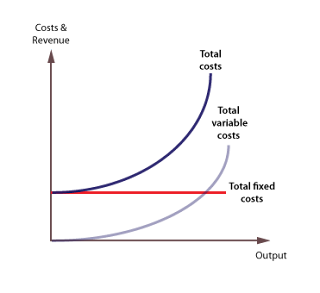Power of Financial Statement Analysis with Essay Writers Online |Essay Tips
Introduction:
Essay Writers Online puts you
at the forefront of financial data analysis. With the help of our team and
in-house expertise, you can improve your understanding and ability to make
informed decisions regarding financial statements.
The Role of Essay
Writers Online in Financial Statement Analysis:
Financial statement analysis
requires skills that EssayTips brings to the table. Their ability to research,
analyze, and communicate complex information clearly and compellingly presents
insights gleaned from financial data. Using the expertise of essay writers
online, you can take your learning experience to the next level.
Using Essay Writers
Online to Simplify Financial Concepts:
Financial statement analysis
can be intimidating due to its jargon and terminology. However, complex
financial concepts can be broken down into smaller chunks with the assistance
of essay writers online. Essay writers online offer a comprehensive range of
services to help with ratio analysis, cash flow statements, and other critical
issues.
Methods of Financial Statement Analysis
Financial statement analysis
helps evaluate a company's financial health. It provides various aspects of a
company's operations. Each method of financial statement analysis has a
different perspective on the company's finances. Three popular methods are horizontal,
vertical, and ratio analysis.
1. Horizontal Analysis:
Horizontal analysis
identifies trends by comparing different financial data at various periods.
With this method, stakeholders can understand how a company's financial
performance has evolved. Analysts can look at revenue, expenses, and net income
to assess the company's growth trajectory. With horizontal analysis,
stakeholders can gauge the company's economic stability.
If a company's revenues have
steadily increased over the past few years while expenses have remained
relatively stable, it could indicate effective cost management and revenue
growth strategies. There may be operational inefficiencies or external issues that
require addressing if there is a significant decrease in profitability over a
long period.
2. Vertical Analysis:
Financial data as a
percentage of a base amount is used in vertical analysis. With this method,
stakeholders can assess the relative proportions of various line items and
compare the composition of different line items to learn more about the
company's financial structure.
Vertical analysis can reveal
the proportion of assets financed by debt versus equity in the balance sheet. A
vertical income statement analysis can show the contributions of different
revenue sources to the company's profitability.
3. Ratio Analysis:
Calculating different aspects
of a company's performance in terms of liquidity, profitability, and leverage
is called ratio analysis. Common ratios include the debt-to-equity ratio,
current ratio, and return on investment. These ratios help stakeholders evaluate
a company's financial position relative to its peers.
The debt-to-equity ratio
shows how dependent the company is on debt. A high debt-to-equity ratio
suggests higher financial risk as the company may struggle to meet debt
obligations in adverse conditions.
Frequently Asked Questions (FAQs)
What does the financial
statement analysis do?
Financial statement analysis
is used many times. It mainly serves as a reference point for stakeholders to
assess a company's financial position during a particular time frame. People
can evaluate the company's financial health with the aid of it. Financial
statement analysis gives insight into the company's financial standing and
prospects, helping make informed investment or lending decisions.
What is the process for
finding the current ratio?
The current ratio evaluates a
company's ability to meet short-term obligations. It can be calculated by
dividing the total assets by the total liabilities. Current assets include
cash, accounts receivable, and inventory, while current liabilities include
accounts payable and short-term debt.
How should one interpret a
very high debt-to-equity ratio?
A high debt-to-equity ratio
indicates a company's utilization of debt financing instead of equity. Debt
financing increases financial risk. Investors and creditors may be cautioned
about the company's susceptibility to economic decline and potential difficulties
in meeting debt obligations if the debt-to-equity ratio increases, suggesting a
higher debt-to-equity ratio than investors and creditors.
How can financial statement
analysis help investors?
Financial statement analysis
gives investors valuable insights into a company's financial health and
performance so they can make informed investment decisions. The company's
profitability, solvency, and growth prospects can be assessed with the help of financial
statements. The information helps investors make better investment
decisions.
What does it indicate as
having a negative net profit margin?
A negative net profit margin
shows that a company's expenses exceed revenues. This may happen because of
declining sales, rising costs, or one-time expenses. A negative net profit
margin indicates that the company's profitability is being negatively impacted
by operational inefficiencies or challenging market conditions. Investors and
analysts usually focus on the reasons for the negative margin to evaluate the
company's performance and prospects for improvement.
Conclusion
Financial statement analysis
is vital to evaluating a company's economic performance. By understanding
critical financial ratios, stakeholders can gain valuable insight into a
company's financial position and make sound investment or lending
decisions.




Comments
Post a Comment